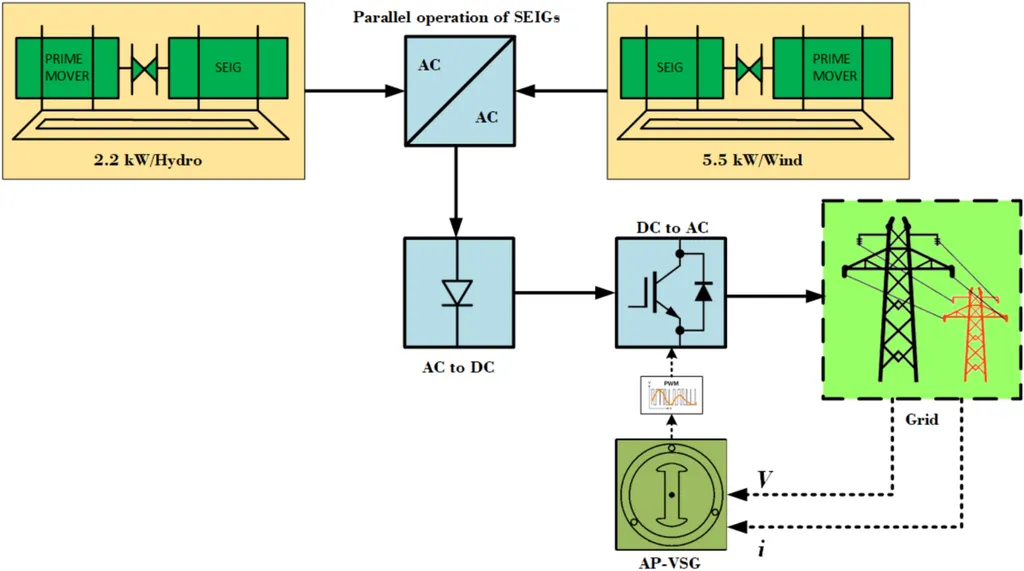In the rapidly evolving energy sector, integrating renewable energy sources like photovoltaic (PV) systems into the grid presents both opportunities and challenges. One of the key hurdles is maintaining grid stability, particularly when dealing with dynamic oscillations and active power overshoot. A recent study published in the journal *China Electric Power* (translated from ‘Zhongguo dianli’) offers a promising solution to these issues, potentially reshaping how we manage grid integration of renewable energy sources.
The research, led by Xiangqi Xiao from the State Grid Hunan Electric Power Company Limited Power Supply Service Center in Changsha, introduces a novel control strategy for photovoltaic storage virtual synchronous generators (VSGs). This strategy combines active high-frequency feedback suppression (AHFS) and radial basis function (RBF) neural networks to enhance system stability and performance.
Traditional VSGs often struggle with active power overshoot and system dynamic oscillations, which can lead to frequency deviations and transient instability. Xiao and his team addressed these challenges by introducing a first-order filtering link to improve high-frequency suppression and adding an active power differential term to the power feedback loop. This modification significantly enhances the system’s dynamic performance.
One of the standout features of this research is the use of particle swarm optimization (PSO) algorithm to determine the optimal active power differential coefficient. This approach ensures that the system balances active power overshoot and rise time effectively. Additionally, the team designed an adaptive control strategy for virtual inertia using RBF neural networks, allowing the system to adjust virtual inertia in real-time based on the system’s angular velocity and its rate of change.
“The coordinated control method effectively mitigates the issues of power overshoot and frequency overshooting in traditional VSGs,” Xiao explained. This innovation is crucial for the energy sector, as it enhances the transient stability of the grid, making it more resilient to disturbances.
The implications of this research are far-reaching. As the world increasingly turns to renewable energy sources, ensuring grid stability becomes paramount. Xiao’s work provides a robust framework for integrating PV systems into the grid, reducing the risk of frequency deviations and active power oscillations. This not only improves the reliability of the energy supply but also paves the way for more efficient and sustainable energy management.
The study’s findings were validated through simulations, which demonstrated the effectiveness of the proposed control strategy in suppressing frequency deviation and active power overshoot. These results highlight the potential of AHFS and RBF neural networks in enhancing the performance of photovoltaic storage VSGs.
As the energy sector continues to evolve, innovations like those presented by Xiao and his team will play a pivotal role in shaping the future of grid integration. By addressing the challenges of dynamic oscillations and power overshoot, this research offers a glimpse into a more stable and efficient energy landscape. The work published in *China Electric Power* underscores the importance of advanced control strategies in achieving a sustainable and resilient energy future.

